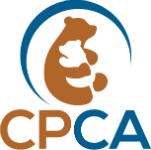We start each Personal Safety Program workshop by explaining to students that it is a “just-in-case” lesson, similar to practicing fire drills. This explanation puts students at ease. If something like this were to happen to them, they will know what to do and how to keep themselves safe.
Grade Pre-K – 2
-
- Define and explore types of save vs. unsafe touches.
- Perform short puppet skits testing comprehension of safe vs. ouch! (unsafe) touches
- Teach assertiveness skills: students are taught they are the boss of their body.
- Help students identify the areas of their body that are private.
- Define Personal Safety rules that go along with the private parts of their body.
- Discuss their personal body alarm and explore how it would help keep them safe.
- Emphasize the need to tell a trusted adult.
- Define happy safe secrets vs. unsafe secrets.
- Stand up and practice the safe touch song:
Trust your feelings, try to say no, try to walk away, and TELL an adult!
- Perform a puppet show. Students see how a puppet is tricked by an unsafe touch or inappropriate picture, how it makes the puppet feel (scared, troubled, worried), and how telling a trusted adult solves the problem.
Grade 3-5
- Hand out a pre survey for students to complete.
- Review and summarize Personal Safety Program concepts taught in younger grades.
- Expand on topics such as safe/unsafe secrets, assertiveness skills, and trusting adults.
- Show an age appropriate video which helps guide a discussion about what they should do if someone they love breaks the personal safety rules. Children learn that telling an adult can be very challenging, but always important, to put their safety first.
Videos: Sponsored by the Committee for Children- Second Step Program, Child Protection Unit:
Students watch a video story:
- Grade 3: “David Speaks Up” (CPU3 FAMI LYG3)
- Grade 4: “Hannah Keeps Herself Safe” (CPU4 FAMI LYG4)
- Grade 5: “Lee Keeps Himself Safe” (CPU5 FAMI LYG5)
Note to parents: You can access the above videos at home by visiting SecondStep.org and log in with the activation key (see above) to get more information about what your child has viewed.
- Grade 5 students are introduced to the concept of abuse. Three types of abuse are discussed: physical, emotional, and sexual. They are given a worksheet describing seven scenarios. A classroom discussion follows, examining each scenario. Is it abuse or not? If not, why?
- Conclusion: At the end of every presentation, a brief survey will be given to check the comprehension of the student as well as give him or her an opportunity to disclose any feelings or unsolved problems they may have.





